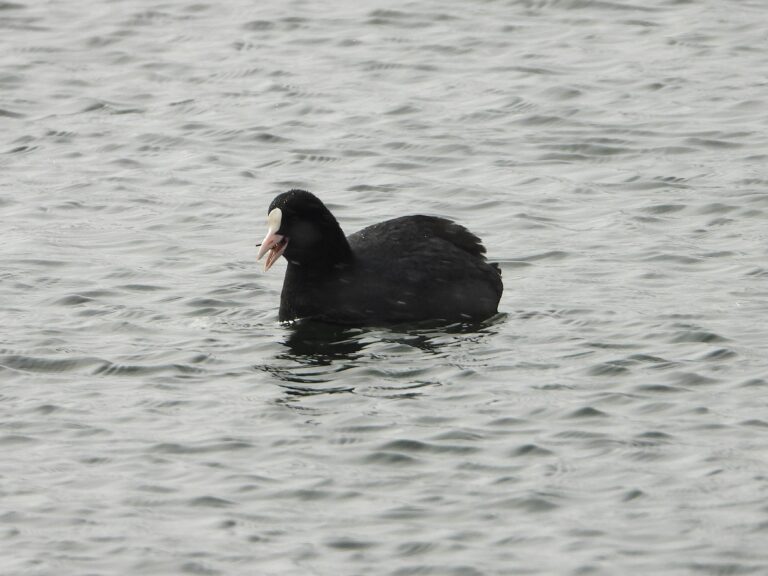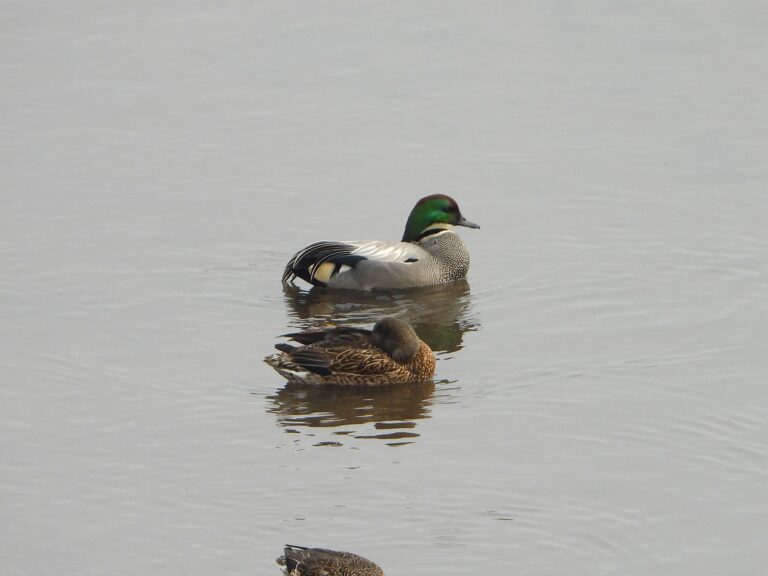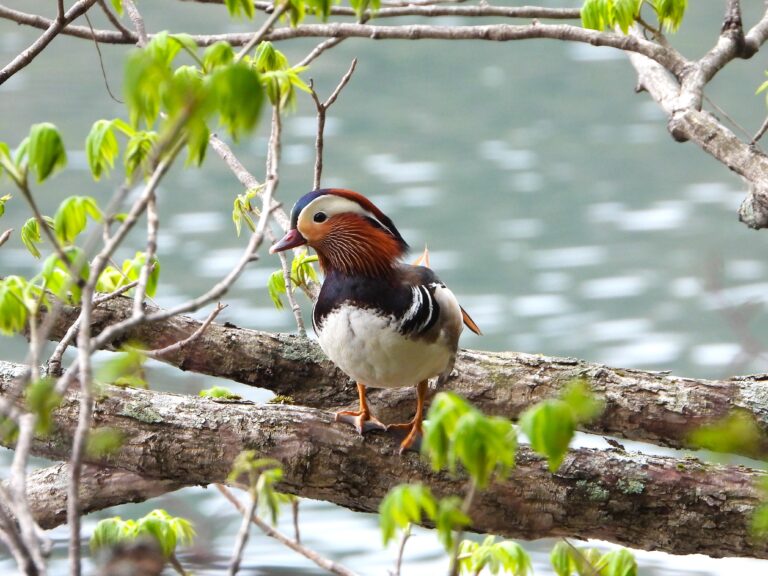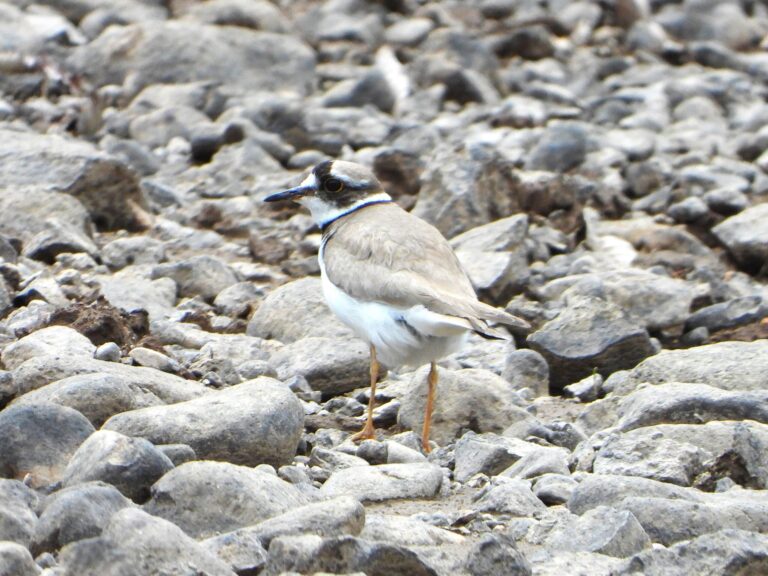Northern Lapwing (Vanellus vanellus) – Wildlife of Japan
Introduction
The Northern Lapwing (Vanellus vanellus) is a striking winter visitor to Japan, easily recognized by its long crest and shimmering green-and-purple plumage. Known locally as Tageri, this bird adds a graceful touch to Japan’s farmlands during the colder months. It is widespread across Eurasia, and Japan marks the southeastern edge of its non-breeding range. During winter, flocks of these elegant plovers can be seen resting or foraging in quiet rice fields, their gentle presence bringing life to the still landscape.
Appearance
The Northern Lapwing measures around 28–33 cm in length with a wingspan of 67–87 cm. Its most distinctive feature is a long, slender crest extending from the back of the head, particularly prominent in males.
The back and wings display an iridescent green or purple gloss, which changes with the angle of light. The face is patterned in black and white, and the underparts are bright white. Its wings are broad and rounded, giving it a unique, fluttering flight style.
Legs are reddish, and the bill is short and black. The sexes are similar, though males often have longer crests and richer coloration. In flight, the black-and-white contrast of the wings makes this bird unmistakable.
Habitat & Distribution
The Northern Lapwing breeds across Europe, Central Asia, and parts of Siberia, migrating southward to spend winter in regions with milder climates.
In Japan, it appears mainly from late October through March, with records across Honshu, Shikoku, and Kyushu, occasionally reaching southern Hokkaido. It is not known to breed regularly in Japan.
Preferred habitats include post-harvest rice paddies, wet meadows, and open lowland fields. These shallow, moist environments provide abundant invertebrates for foraging. The species often rests in groups on dry stubble fields and feeds in nearby flooded paddies.
Where to See in Japan
Northern Lapwings can be observed in open agricultural landscapes during winter.
Typical regions include:
- Kanto Plain (Ibaraki, Tochigi, Saitama)
- Kyoto Basin and Nara Basin
- Arasaki area in Kagoshima, where they sometimes appear alongside cranes
The best viewing periods are early morning and late afternoon, when their metallic sheen glows in low sunlight. Quiet observation from a distance is important, as the species is sensitive to disturbance.
Behavior
The Northern Lapwing is highly social outside the breeding season, often forming flocks of dozens of individuals in Japan’s rice fields.
Its flight is slow and buoyant, with deep wingbeats that give a floating appearance. When alarmed, flocks rise together, uttering soft “pee-wit” or “mew”-like calls.
On the ground, they walk steadily, pausing to pick insects or worms from the soil. In Europe, their courtship display includes acrobatic dives and rolls, though this behavior is rarely seen in Japan since they do not breed here.
During feeding, they sometimes use a foot-trembling technique to stir up hidden prey.
Diet
Northern Lapwings are mainly insectivorous, feeding on:
- Earthworms
- Beetles and their larvae
- Grasshoppers and crickets
- Snails and small crustaceans
They forage in soft, muddy areas where prey is accessible. In Japanese rice paddies, they benefit from post-harvest conditions that expose soil invertebrates. Plant matter and seeds are occasionally taken, but they are not a significant part of the diet.
Reproduction
This species does not breed in Japan. Its breeding grounds are located across temperate Eurasia, where it nests in open farmland and grassland.
The nest is a simple depression in the ground, often lined with grass. A clutch usually contains 3–4 eggs, incubated by both parents for about 24–28 days.
Chicks are precocial, leaving the nest soon after hatching and feeding themselves under parental guidance.
By late summer, adults and juveniles migrate southward, reaching Japan by mid- to late autumn.
Conservation
Globally, the Northern Lapwing is listed as Near Threatened (NT) by the IUCN Red List, due to declining populations across Europe and Asia.
The main causes include:
- Loss of wet grasslands and traditional farmland
- Early drainage of rice fields
- Reduced insect prey from pesticide use
- Habitat fragmentation and disturbance
In Japan, regional Red Data Books (for example Kyoto Prefecture) classify it as Near Threatened, reflecting localized declines.
Maintaining winter-flooded paddies and wildlife-friendly agricultural practices is vital for sustaining suitable wintering sites.
Citizen observations and photo records from birdwatchers also play a key role in tracking its population trends.
Author’s Impression
I encountered the Northern Lapwing in a vast expanse of rice fields. Its plumage shimmered beautifully in the sunlight, displaying shades of green and violet as it moved. If you want to find this elegant winter visitor, search around wide paddy fields or muddy edges of wetlands — those are the places where lapwings often appear quietly, blending into the peaceful winter landscape.








